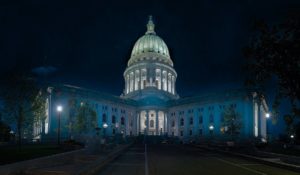‘The use or misuse of that power is everything’: Professor X’s lesson for the administrative state

Marvel fans far and wide are excited about the theatrical release of Dr. Strange in the Multiverse of Madness, which introduced X-Men franchise fan favorite Professor X to the Marvel Cinematic Universe.
In the X-Men films, Professor X is a respected telepath who leads the mutants (humans with gene mutations that give them powers). The U.S. government—specifically, the administrative state—is constantly oppressing the mutants for having “superpowers” that make them both different and a threat to humans.
The administrative state portrayed in the films is, of course, far more abusive than in our real-life government, as is evidenced by the large-scale acts of violence these bureaucratic agencies commit against the mutant population. Perhaps the most horrifying example of the administrative state oppressing the mutants comes from the film X2: X-Men United.
Colonel William Stryker is a military leader who believes mutants are a threat to the country. (“I am not a monster,” Stryker explains in a later sequel. “I’m simply a patriot.”)
In X2, Stryker stages an attack on the president in order to convince the president to give him expanded power. He then uses that power to launch an investigation into Professor X’s mansion.
Ultimately, in his desperate campaign to eradicate the entire mutant population, Stryker becomes violent and completely oversteps the authority the president granted him. While this is an extreme example of state abuse, there’s a reason that shadowy government experts make such great comic book villains. In the real world, the administrative state does harm individual rights when it exceeds its authority—as it often tries to do.
Just as Stryker oversteps the authority the president grants him, administrative agencies like the Environmental Protection Agency (EPA) and Centers for Disease Control and Prevention often take the powers Congress has delegated to them and interpret them so broadly that they exceed what was actually granted in law.
It should come as no surprise that the agencies’ interpretations of the laws they are tasked with enforcing are often biased to increase their own power. One such example comes from interpretations of the Clean Water Act by the EPA and the Army Corps.
The Clean Water Act regulates the discharge of “pollutants” from “point sources” to “navigable waters,” defined as “the waters of the United States, including the territorial seas.” 33 U.S.C. §§ 1311(a), 1362(7) and (12). Depending on the type of nonexempt discharge involved, a permit is required from either the EPA or the Army Corps.
While regulating water pollution may be a legitimate goal, the agencies are issuing regulations to define “waters of the United States” that are so broad that they have regulated features an ordinary person would not consider waters. Indeed, the agencies have asserted jurisdiction over small bodies of water that do not connect to other bodies of water and seasonal features otherwise resembling dry land. This “land is waters” approach means that the EPA and the Army Corps can penalize Americans with fines and jail time for simple activities such as farming, digging small ponds, and moving dirt away from these insignificant features.
The story of the Sackett family exemplifies how the EPA is exceeding its authority with a broad interpretation of the Clean Water Act.
In 2007, with all necessary local permits in hand, the Sacketts began building their dream home in an otherwise built-out residential neighborhood near Priest Lake, Idaho. But shortly after preliminary construction activities began, officials from the EPA and the Army Corps arrived unannounced and informed the Sacketts that all work should stop because, in their view, the lot contains “navigable waters” under the Clean Water Act. The agencies told the family that they needed a federal permit to build on the lot.
The Sacketts’ lot does not contain a stream, river, lake, or similar waterbody. And it is separated from the nearest navigable water by a road and a row of houses. Undeterred, the EPA issued the Sacketts an administrative compliance order demanding that the Sacketts undertake costly restoration work on the lot and refrain from further construction, threatening the Sacketts with administrative and civil penalties of tens of thousands of dollars per day, should they fail to comply.
Initially, the EPA attempted to block the couple from challenging the administrative compliance order in court. With Pacific Legal Foundation’s help, the Sacketts fought for their day in court, and in 2012, the Supreme Court unanimously ruled that the Sacketts had the right to challenge the compliance order in court.
But the legal battle didn’t end there.
For the past decade, the Sacketts have been battling with the EPA over whether their lot contains federally regulated “navigable waters” under the Clean Water Act. They are now returning to the Supreme Court to clarify what the federal government can and cannot regulate under the Clean Water Act.
While he may be only a fictional character, Professor X has wise insights into the administrative state’s abuse of power that are, believe it or not, relevant to what the EPA is doing in the Sackett case.
Throughout the X-Men series, Professor X warns against abuse of power. His most pertinent lesson for the administrative state comes from the film X-Men: The Last Stand:
“When an individual acquires great power, the use or misuse of that power is everything. Will it be used for the greater good? Or will it be used for personal or for destructive ends?”
The unelected bureaucrats in the administrative state have acquired “great power,” but they should not use that power for “destructive ends,” such as unfairly treating property owners like the Sacketts.
The administrative state should follow the wise advice of Professor X. But if they don’t, Pacific Legal Foundation remains ready to make a “last stand” for liberty.






